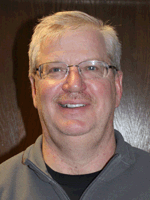
Using Research-based Calf and Heifer Products – Pat Hoffman, Vita Plus
 By Pat Hoffman, Vita Plus dairy technical specialist
By Pat Hoffman, Vita Plus dairy technical specialistMost of us have heard the old cliché “milk doesn’t come from the store” and the cliché is common fabric among us whom are passionate about the dairy industry. In short, it simply means we want to tell our story.
The same can be said for dairy calf and heifer technologies we use on our dairy farms today. Most dairy calf and heifer technologies we use didn’t come from the store either; rather they are the result of dedicated research by land grant universities and industry alike.
Here’s a fun and thought-provoking question regarding our calf and heifer technologies: Where did we get the calf hutch?
The calf hutch was developed and pioneered at the Marshfield Agricultural Research Station at the University of Wisconsin-Madison as a result of collegial friendships with faculty at South Dakota State University. The fun part is the calf hutch was developed out of desperation rather than invention. In the 1960s, both universities were experiencing major calf death losses when calves were raised in the common calf pen in the milking barn. The researchers simply started raising calves outside in makeshift wood boxes and found the calves didn’t die and grew remarkably better. The rest of the story is known—now calf hutches dot the landscape.
The same is true for new calf and heifer technologies we employ today. Within the last decade, researchers at Cornell University and the University of Illinois began to rethink the nutrient needs of neonatal calves. Like the calf hutch story, these researchers found that when they doubled the caloric intake, calves were healthy and grew better. The dairy calf and heifer team at Vita Plus carefully reviewed this research and now MomentaCalf and Calf Precision are a part of the Vita Plus milk replacer lineup, giving our customers a wide selection of research-proven milk replacers.
Similarly, industry research found ways to either dry or extract intact immunoglobulin proteins from maternal colostrum or blood, respectively, as a precursor to the development of colostrum supplements and colostrum replacers. Numerous field trials were conducted to evaluate colostrum supplements and colostrum replacers and determine the efficacy of passive transfer. Today, products like Secure® can be used as a colostrum replacer for situations when maternal colostrum may have been compromised or labor is an issue.
The influence of dairy calf and heifer research is omnipresent on dairy farms. Researchers at the University of Wisconsin and Virginia Polytechnic Institute evaluated the efficacy of on-farm milk pasteurizers and found, when managed properly, on-farm pasteurizers do a good job of reducing pathogen levels waste milk. Researchers at the University of Minnesota helped fine-tune the pasteurization of colostrum for dairy farms needing greater levels of internal biosecurity. The coccidiostats and many of the nutraceuticals in milk replacers and calf starters have been tested in a multitude of research trials for their efficacy. Even the nutrient requirements of dairy calves and heifers and the ration programs that utilize these requirements are the product of dairy calf and heifer research.
Finally, some of the best dairy calf and heifer research is the research that we seldom see publicly discussed. That research includes the concepts and ideas designed to improve calf and heifer productivity which failed. These ideas, concepts and products are not in the Vita Plus lineup of calf and heifer products – and we can be thankful for that. The calf and heifer team continues to scrutinize new research with the goal of developing the best calf and heifer technologies to help our customers grow better dairy calves and heifers.
| Category: |
Calf and heifer nutrition Starting Strong - Calf Care |

